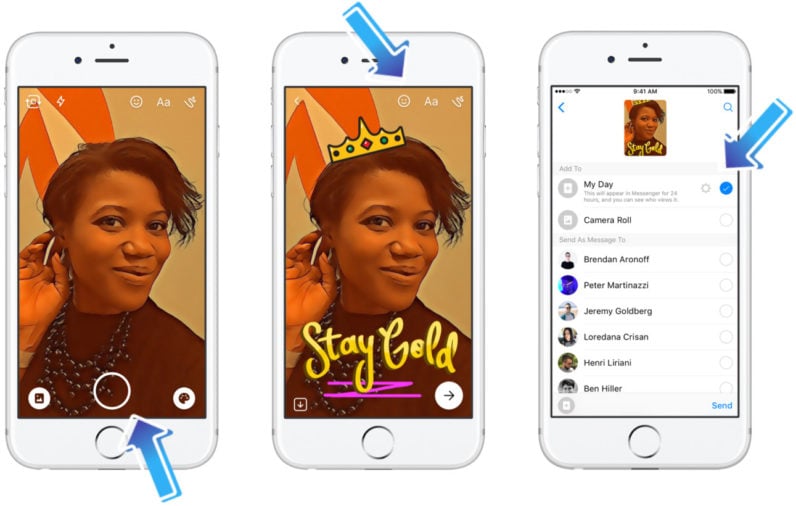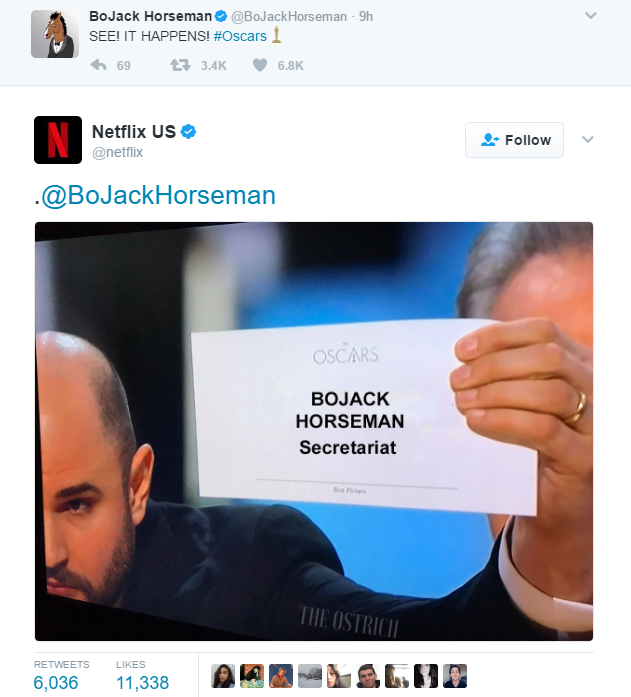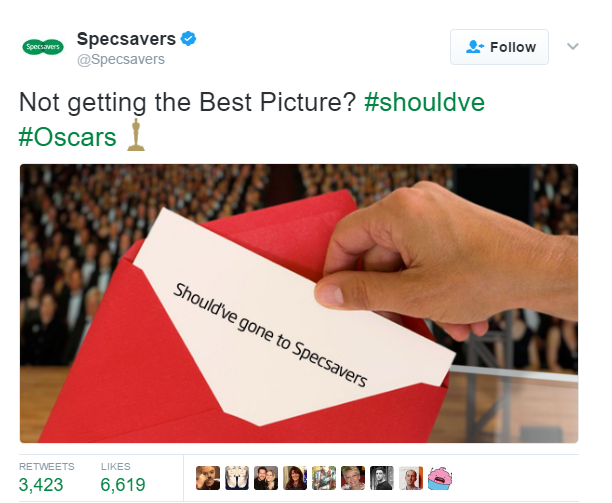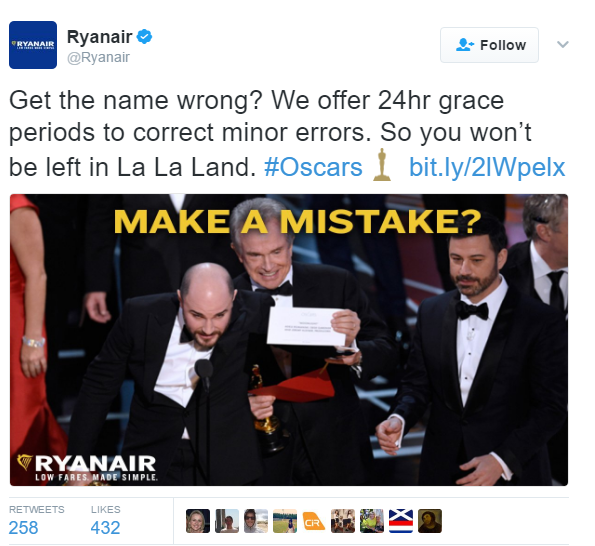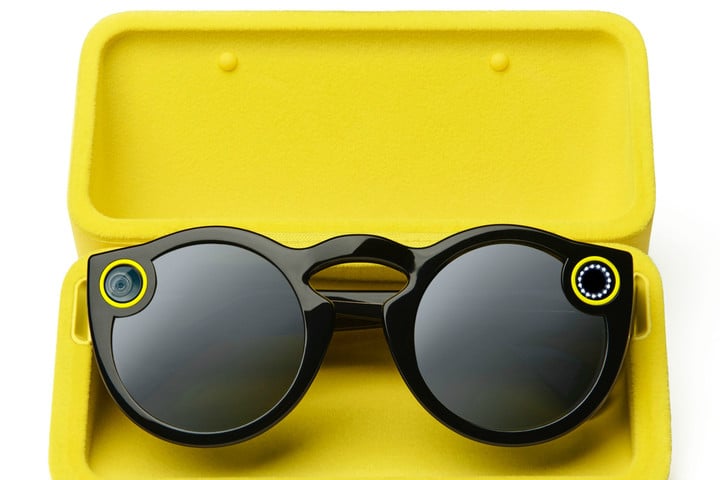Maybe the biggest technological enhancement, the development of the World Wide Web in the early 90s, opened a new world of opportunity to not just people, but businesses of all shapes and sizes – a global market where goods and services can be exchanged with ease was born. Roll on 20 years and we are reaching a stage where the online space is threatening to eclipse in-store trading. According to a study by Eurostat, 87% of UK consumers have bought at least one product online in the last 12 months. When you reflect on these advancements, it comes as no surprise that more and more advertisers are opting to have an online presence.

Traditional advertising generally uses strong imagery to draw the eye of the consumer and create desire for the product/brand in question.
Traditional advertising Vs digital advertising
Traditional advertising and digital marketing, while sharing the same goal, often serve different functions. Above the line campaigns (print, billboard and broadcast) generally serve to drive brand awareness to vast audiences with the anticipation that the brand will remain at the forefront of the consumer’s mind when they get to the consideration stage in the path to purchase.
In order to do this, above the line advertising campaigns must not only be memorable, but first must attract attention. The best way to capture this attention is through strong, engaging imagery, as visual processing requires the least amount of cognitive energy within the human brain, making it the most appealing form of communication to an individual.
Think back to the iconic Nike Air Jordan advertisements of the 1990s – it’s unlikely that this campaign would have been quite as successful if the imagery used wasn’t so attention-grabbing. Once the audience’s attention has been captured they can then be pointed to a preferable course of action.
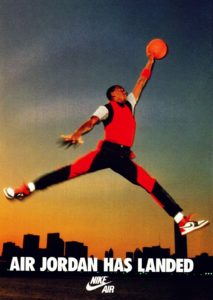
One of the most iconic advertising images of the 1990s, Nike’s Air Jordan campaign used vibrant, dynamic imagery to draw the eye and start the conversation with the consumer.
However, this isn’t always the case when it comes to the digital world. Often, in this new online marketplace, the consumer is already in the market to buy. Practices like PPC and SEO serve to respond directly to a need that has been made known by the consumer – negating the need for any imagery at all.
To illustrate this; think of the last time you went to a market (food or otherwise), the chances are you were looking for a specific commodity. It’s unlikely that there were any big advertising displays, no vibrant ad creative, instead you were met with multiple offerings, with vendors trying to shout the loudest to draw custom in. Despite obvious differences, this isn’t dissimilar to how the search landscape works.


The online market place works in a similar way to a traditional food market, where advertisers push products to consumers already in market to buy.
How can brands stand out in the busy online world?
As more and more advertisers promote their brands via digital campaigns, the more cluttered the market has become, making ‘shouting the loudest’ through text ads tricky, regardless of how well written they are. This re-ignites the need to stand out through a visual element, which is why social media in particular is increasing in popularity and why Google is adding the option of visual site links within search ads.
The creative formats and inventory now available across digital media websites provide the perfect balance between cutting through the noise of the market, and offering a direct route to sale.

Advertising on social media is becoming more and more prominent, with bright, vivid imagery often used to cut through the noise of the market.
In addition to this, advertisers now have the ability to be reactive with their creative content, posting engaging visuals that reflect social discourse further enhancing the message’s relevance and engagement. For example, who remembers the Twitter post by Oreo during the 2013 Super Bowl when the stadium was plunged into darkness?
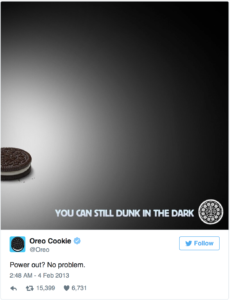
A fantastic piece of reactive promotional content. Social media provides the ability for advertisers to promote their brand in real-time, allowing campaigns to reflect social discourse.
Though methods of advertising and marketing products continue to evolve, consumers remain highly influenced by visual content. The need for creative imagery within advertising messages therefore remains as important as it has ever been. The use of imagery within advertising isn’t dwindling, but merely growing and evolving to fit with its ever-changing surroundings.
A report by Forbes predicts that 84% of marketers’ plan on executing at least one influencer marketing campaign during the next 12 months. Kylie and Kendall Jenner have been up there with the most popular social media influencers and despite the fact they split opinion on their contribution to society, when it comes to their social media outreach, there are few that can rival the sisters.
Once recent example saw Kylie Jenner collaborate with an affordable clothing brand, Fashion Nova, and in an Instagram post she captioned, whilst wearing an item from the brand: “You don’t have to buy designer clothes to look like a superstar. You just need Fashion Nova.” The post received a staggering 2.2 million likes in 5 days.
Kendall may have had her critics after the Pepsi fiasco and probably rightly so. The campaign exploded like a can of Pepsi if shaken too hard. But her social media following is staggering on all leading platforms. Like her sister, Kylie, she too often promotes brands on her Instagram page – a more recent post, for a retail company called Daniel Wellington, generated almost 3 million likes – and the priceless halo of association with the star and access to her fans.
Perhaps one of the most important stats when it comes to influencers is that 47% of internet users have installed an ad blocker program. But this bares no effect to social media influenced posts – how can you stop Kylie Jenner’s promotion of a watch appearing on 83 million Instagram feeds? You can’t – Social media influencers are immune to ad blocking – It’s the sort of benefit that needs the full advantage taken from.
It’s less to do with the exposure a brand gets and more to do with the association alongside the influencer that they are paying for. A Tomson Blog survey suggested that 51% of marketers believe they acquire better customers through influencer marketing. The survey also concluded that influencer marketing was rated as the fastest-growing online customer-acquisition channel, beating organic search, paid search and email marketing. Ask yourself, what is likely to entice you more – seeing a banner advertisement on Facebook for a new line of Adidas trainers or your favourite singer wearing them telling you that they love it?
YouTube along with Instagram are the most popular platforms social media influencers use to promote products and services, as reported by Forbes. According to Google, 70% of teenage YouTube subscribers say they relate to YouTubers more than to traditional celebrities. It comes as no surprise that this is largely understood by companies such as EA and Machinima, who push their new releases of games like FIFA and Call of Duty via famous YouTubers that have made a name for themselves playing these games.
KSI is one many social media influencers that FIFA use to push their latest installments of the football game – with over 17 million YouTube subscribers, 15 million more than EA Sports FIFA themselves, it’s a no-brainer why KSI is the more viable option to help push the game.
It’s native advertising but revamped – you already know the influencer is promoting a product, but you don’t mind it. It’s the reputation that precedes them, which serves as a loyalty factor to their viewers and followers.
It’s also the subtleties in which the best ones do it with, to integrate their branded campaigns into the unique episodes or series without skipping a beat. Therefore, it’s integral you’ve got the right people for the job – the kind of folks that have the contacts to the right influencers, the experience yet the connectivity to the latest trends and an understanding and appreciation for a specific product or service.
Every day the digital industry is changing – internet consumers are wising up with the tools to prevent spamming and distracting advertising. But the marketers are fighting back – with social media influencers who can attract millions of impressions and promote a brand with priceless credibility and authenticity.
The new principles – right up at the top so no-one misses them – revolve around flexible ad specs and LEAN ads. The former is a specific call for ads and content that scale easily to multiple devices. The latter (an acronym for Light, Encrypted, AdChoices-supported and Non-invasive) is a mini-manifesto for lightweight and non-disruptive ads, and one that attempts to remind brands of something most of them used to know: advertising doesn’t work if it doesn’t put consumers first.
“LEAN ad experience for digital advertising is based on the following principles,” booms the IAB, like a disappointed headmaster who doesn’t plan on saying this twice. “1. Respect: A consumer’s primary objective is consuming publisher content. 2. Control: A consumer has control over his/her advertising experience. 3. Choice: A consumer decides what content he/she wants to experience and for how long.”
Well, obviously. As with Google’s promised Chrome ad-blocker, developed with the Coalition for Better Ads, the IAB is only pointing out that annoying ads annoy people. And if any piece of advertising is to do its job well, it needs to be creative, not resort to silly tricks and not impose itself undesirably on the people it is trying to impress.
A consumer-first, creative-first message is a timely one, and it has been in the wind for a while – not only in an advertising context. Many brands espouse a mantra of focusing on consumers – their satisfaction, their loyalty, their values – in order to fit into their lives, keep on earning their custom and, almost as importantly, avoid their disapproval.
But as much as brands know this, badly-deployed technology has a way of distracting them. Digital marketing has, at various points in its evolution, become hung up on meaningless metrics – the number of clicks or followers generated, the number of impressions served. When you lose sight of the real target – the consumer you are trying to reach – pushy ads, excessive targeting and irrelevant targets start to look tempting.
Increasingly, I think we can see wise brands looking straight through such numbers and returning once again to business fundamentals, such as revenue earned and customers satisfied. As digital has matured, it has become a tool, not just a clever trick, and the refined power of digital methods has sparked a recollection of exactly what brands are trying to achieve.
The IAB’s guidelines are welcome because by warning brands against wearing consumers’ patience thin, they are helping to light up the far more effective path of matching creativity with technology. Target the right customers at the right moment, but do it in a way that legitimately interests, impresses or diverts them.
By following those principles, we are naturally shifting back to an older version of advertising. There’s a reason people remember TV ads but not banner ads; in the shift from analogue days to digital times, we have too often misplaced the magic of advertising. Technology shouldn’t be steering us further away from it, but helping us rediscover it.
Join us on the 19th of October to explore ways in which creative and programmatic can work together to drive engagement with audiences. We will be joined by our friends at The Guardian, Oracle and Adobe to discuss how brands can ‘Bring back the Magic’ of creative excellence and couple this with highly targeted data-led campaigns! Email neil.pauksztello@tugagency.com to reserve your space!
The focus of the event was around augmented reality and virtual reality, with Facebook continuing to develop their offerings in these areas.
Camera
Mark Zuckerberg’s keynote, streamed on Facebook Live, was about how the camera has become the first mainstream AR platform as people are already using their phone cameras to augment their photos with text, filters and facial alterations.
Facebook will continue to focus on their camera and associated digital design features with its Augmented Reality Camera Effects Platform which will allow developers to create selfie masks in the same vein as Snapchat filters, but also overlay information onto real world objects – reviews over restaurant storefronts for example.
Social VR
Facebook also announced a new social VR product called Spaces where you can meet up with friends and chat as an avatar. This is notable because it’s an attempt to turn the solitary technology of virtual reality into a group activity. When you call someone on Spaces they will be instantly transported to your virtual world to interact with your avatar.
Making more of bots
Facebook is home to 10s of 1000s of chatbots, which are busily answering questions, booking flights, and resolving disputes between brands and consumers. Facebook has recognised the lack of searchability of these bots and added a bot discovery tab for bots. It will also try out QR codes which brands can use for bringing people into conversations with their chatbots – something they’ve tried in the past with only limited success.
Facebook Workplace
Facebook continues to challenge professional messaging app Slack with their Workplace offering, announcing more partners at F8 including Microsoft, Box, Quip and Salesforce who will all help to add new features like sharing and file organisation. They will become even more competitive by introducing a freemium pricing model which will allow smaller businesses to use a basic version without paying.
Messenger
And the social network continues to build on its Messenger platform, which now boasts 1.2 billion users. Users can now add a brand chatbot into a group thread and share the conversation and experience and order food through M (Messenger’s Siri-like AI assistant) on delivery.com. These changes look to be inspired by Chinese messenger competitor WeChat which has managed to embed itself into the everyday life of 800 million people, allowing them to pay for food, book taxis, and do their banking within the app.
– Messenger isn’t the first, we’ve been here before
– Emerging markets set to benefit
In an all too familiar turn of events, Facebook has announced another clone of the popular Snapchat Stories feature, this time for Messenger. This move comes just weeks after releasing Status, a like-for-like Stories copy built for WhatsApp.
So what exactly is Messenger Day? Facebook say that users can now “share photos and videos — as they happen — by adding to your Messenger Day, where many of your friends can view and reply to them”.
Simply, people can take images and video and apply a series of effects, lenses, drawings, text and animated filters before sharing with friends by adding it to ‘Your Day’.
This, of course, comes months after the social network first duped the popular photo sharing app with Instagram Stories – a runaway success with over 150m daily users in just 6 months.
The Guardian’s Alex Hern puts the clone count now at 18. EIGHTEEN.
Facebook are showing no signs of stopping there either. Oh no. They’ve been testing their very own ‘Stories’ feature exclusively to users in Ireland, a camera tool that lets users share photos and videos with friends by adding them to a ‘Story’. Testing hardly seems necessary with 3 copies already on the market.
With so many ‘Stories’ features now available, will users really want to share the same content across multiple channels with a different post for each? It certainly seems unlikely.
Although we might use a range and variety of social media apps to share and connect with friends – not all markets engage and interact in the same way.
In a study of emerging mobile markets, advertisers Jana highlighted the top ten apps used in India, Indonesia, Brazil and Mexico.
In India, for example, WhatsApp came out on top as the country’s most used app, with Facebook and Messenger coming in 9th and 10th place respectively.
With only a 9% market share in India, Snapchat didn’t make the top 10.
For users in the western markets, another ‘Stories’ clone does seem rather pointless. But for users in India, a ‘Stories’ feature in WhatsApp is a revolutionary update – allowing them to connect and share their ‘Stories’ through the nation’s most used app.
Messenger Day does have its advantages. It offers a much wider array of sharing and privacy controls for users, as well as a huge collection of effects, stickers and frames. So if you’re not already using Snapchat Stories, or Instagram Stories or even WhatsApp Status then this could be the app for you!
But hey, at least they changed the name this time.
Brandwatch says 60,000 mentions occurred in the minute following the biggest mishap in the 89-year history of The Academy Awards.
It wasn’t all doom and gloom, however, as a number of quick-witted brands reacted to this year’s biggest news story so far. We’ve pulled together 6 of the best reactive Tweets from The Oscars 2017, each worthy of their own statuette.
1. Miss Universe

Prior to this year’s Oscars ceremony, Miss Universe 2015 held the title of biggest live-tv mishap. The annual pageant was thrown into chaos as presenter Steve Harvey mistakenly crowned Miss Columbia the winner. After the host realised that he had misread the cue card, he told the shocked audience he had made “an honest mistake”.
Miss Universe’s Twitter account was quick to spot the likeness in their own slip-up, reacting with this simple tweet. With over 24K RTs and 34K likes, sometimes it pays to make a joke at your own expense.
2. Netflix US

Netflix was quick to use the mix-up to promote their animation series, BoJack Horseman. Fans took to social media to highlight the similarities in The Oscars’ fiasco to a moment in the most recent series of the Netflix show.
After a quick edit on Photoshop, Netflix US managed to deliver a quick piece of reactive content that’s received plaudits across Twitter.
3. Specsavers

Arriving late to the party with this effort, Specsavers played cleverly on their ‘Should’ve gone to…’ catchphrase with their own envelope slip-up. It’s not all about speed when it comes to creating a clever piece of reactive content.
4. Virgin Atlantic

Although Virgin Atlantic’s attempt has far less engagement than previous efforts. This tweet is a great example of relevant content that brings a brand into a much wider social conversation.
5. Ryanair

Another late entry to The Oscars’ party, budget airline Ryanair came in with this simple Tweet. By including La La Land and #Oscars in their post, they’ve managed to smoothly link a product feature to a current topic without being cringeworthy.
6. Calvin Klein

Calvin Klein proving here that preparation really is everything. With some of the cast and crew of Moonlight wearing the brand at last night’s ceremony, they were ready to go with this slick image and sharp copy.
Check out our latest branded content guide.
Sub-zero temperatures reached
Last September, WhatsApp tested a host of new features exclusively to Android users running the beta version of the app – with many picking up on the incredible similarity these ‘new’ features had to Snapchat. Users can add stickers and emojis on top of their images and videos, sharing content with friends that would expire in 24 hours.
WhatsApp, however, hasn’t always been a messaging app. Back in 2009, it’s only text-based function was the ability for users to update their ‘Status’ to various scenarios such as ‘at the gym’ or ‘at work’. After adding in messaging functionality later that year, the company have ‘always talked about improving and evolving this original “text-only” Status feature’.
CTRL+C, CTRL+V
Until now, things had been relatively quiet. On Monday (coinciding with the app’s 8th birthday), WhatsApp rolled out its ‘evolved’ Status feature to the masses. Not shying away from earlier critiques, the new feature is almost identical to Snapchat’s Stories feature, which had already been successfully duped by Instagram last year. The Guardian report that this is the 17th time that Facebook has copied Snapchat, that’s right, 17th.
Facebook hasn’t finished there either – with Snapchat clone ‘Direct Share’ in testing. With so many similar interfaces now on the market, users will soon face the dilemma of which story-sharing app takes preference.
Snapchat reported encouraging user growth figures throughout 2016, ending Q4 with 158 million monthly active users. 5 months from launching their Snapchat dupe, Instagram reported daily (yes, daily) users of 150m, with skippable ads now live and testing of full-screen ads now well underway.
Snapchat might be down, but it’s certainly not out just yet – the company is closing in on a mega $200m deal with a yet to be named ad holding company. With the social network now edging ever closer to their much-anticipated IPO, where they are aiming to raise between $19.5 billion and $22.3 billion from listing on the New York Stock Exchange.
Looking to woo potential investors further, the company have made their Spectacles available online for customers in the US – for $129. The glasses record video straight to users feeds from their own unique perspective and come in a variety of colours. Snapchat could yet have the last laugh.
2016 was the year that brands truly understood the power of the influencer, but it was also the year of the micro-influencer. Categorised as a user with 500 to 5,000 friends, these influencers’ earned rate of engagement is 3.5% higher than the average Facebook users. With the average number of friends on the platform at 388, these micro-influencers are thriving off platform popularity to drive their average post engagements sky high.
With some of the highest average rates of engagement on Facebook, brands will need to incorporate and harness the power of micro-influencers into their platform strategies for 2017 – who certainly won’t dent budgets quite as significantly as the most popular YouTube personalities and beauty bloggers.
Last year, UGC content containing a brand delivered a 6.9% increase in engagement over that of shared brand-generated content. With 26% of desktop users now using adblockers whilst browsing, the impact of micro-influencers and UGC content has never been more significant when looking to infiltrate the News Feed.
Breaking down these engagements further, users were commenting and liking content more in 2016, with a 19% and 30% increase respectively. As users, we’re much more likely to tag friends in content as a form of engagement, than we are to create and post content of our own. Platform habits have certainly shifted from what they once were, with key 2016 algorithm changes supporting this.
In June, Facebook shifted feeds to bring users more content from friends and family members “to show users more of the content that’s relevant to them”. This tweak, in particular, led to a 0.5% increase in the average number of engagements per post (6), month over month to July 2016. With friends and family now trumping brands at the top of the News Feed, the time is now to implement an alternative platform strategy or face being left for dead by more original, uniquely branded content.
But how do I create a successful UGC strategy on Facebook in 2017? Mavrck state that these are best formed following these 3 key steps: Use Facebook users who publish original content, user-generated content featuring your brand, and engagements obtained from that user’s network.
With users more reluctant than ever before to share updates with friends and family on their own timelines, the expected introduction of Facebook Stories this year will no doubt change the way we share snippets of our lives once again. 150 million users flocked to Instagram Stories in 5 months: “The way people share today is different to five or even two years ago – it’s much more visual,” Facebook say.
Facebook’s newest Stories feature is poised to sit front and centre of user’s home screen (much like its Instagram counterpart) and the company also revealed in January that testing of full-screen video ads had begun for Instagram. All signs seem to point in the direction of full-screen Facebook advertising becoming the 2017 phenomenon, with many brands already testing the water over on Instagram Stories.
With changes expected to Facebook imminently, 2017 will be the year that changes the way we engage with content and alters the way in which brands advertise to users. By looking at the warning signs from 2016, brands who are fastest to get to grips with these new additions will ultimately reign supreme come 2018.
Read more about Facebook content decrease on Facebook page.
Facebook has justified their decision with reported good results and positive feedback from limited user testing of the new feature. The user experience will be that the sound fades in and out as users scroll past the video in the feed, ‘bringing the video to life,’ according to Facebook. Sound will not play if the user’s mobile is set to silent.
As mobile video viewing increases, Facebook asserts that users are becoming more likely to expect audio in their browsing experience – a far remove from the days where unexpected sound from your desktop was considered a major annoyance. These days, if users are listening to their mobiles with sound on they often have earphones in, meaning the likelihood of disrupting others is minimised. The increasing popularity of lightweight, wireless earbuds could also make this trend more widespread, as people start leaving their earbuds in all day, in constant audio connection with their devices. And this is a trend which is backed up by rival social platform Snapchat, which reports that over 60% of their users listen to video with the audio on.
These changes are part of a wider ambition by Facebook to become a video destination – not just a social network featuring video. Facebook has been strengthening its video arsenal with its live products and an upcoming television app. They also announced today that they would be introducing an upgraded vertical video experience (another nod to rival Snapchat’s success) and a feature which borrows from video rival YouTube’s app experience, where a smaller video box which sits at the bottom of your mobile screen will allow you to view and browse the news feed at the same time.
So what do these changes mean for marketers?
The first question is, will people use this feature or just turn it off in their settings? There seems to be a lot of negative feedback on social media today, branding this change as irritating and intrusive, so there is a risk consumers will switch off. However, past behaviour indicates that the majority of users keep the Facebook default settings, so we can probably expect audio autoplay to follow this trend. However, this doesn’t mean that users will like it and there are likely to be teething issues as people get used to sound popping up in their earphones. Marketers should tread carefully and be mindful not to be too brash in their use of audio and keep an ear to the ground for backlash.
This will almost certainly mean a decline in the use of subtitles used in Facebook video, and a reduction in the number of ‘silent movie’ formats which didn’t rely on any sound, music or supers. This could mean a great increase in creativity, as marketers experiment with voiceovers and sound effects. These will probably be most important in the first three seconds of the video, when the viewer is the most emotionally engaged, and could be used as a ‘hook’ to draw people in and encourage them to view through.
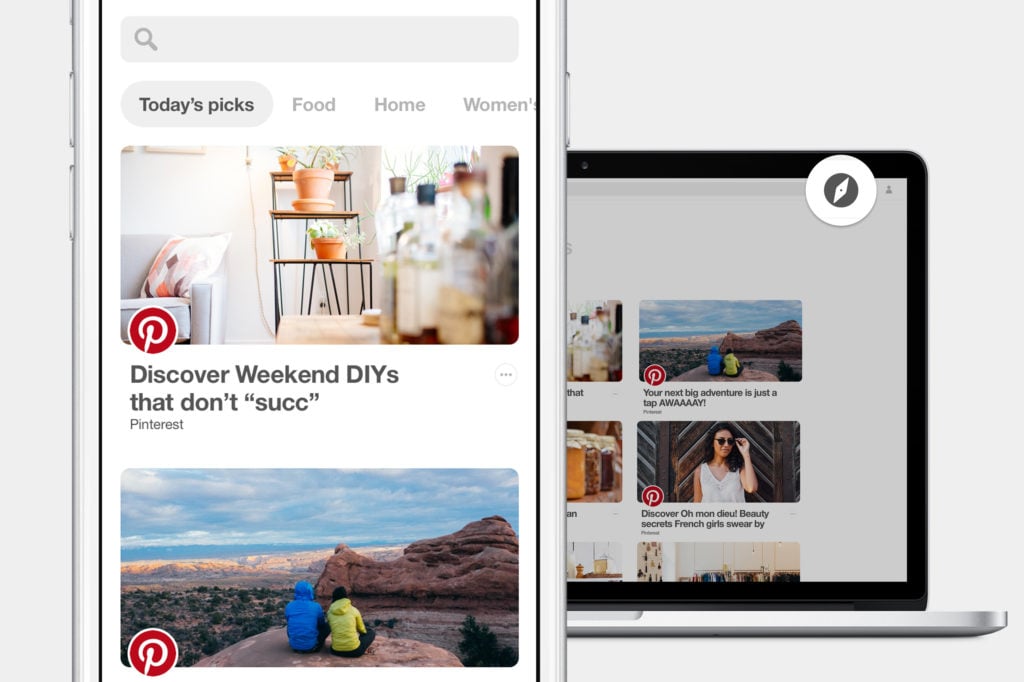
On Tuesday (February 7th), Pinterest introduced the world to the Lens, labelled as “search outside the box”. Simply, Lens lets users explore, search and discover real-life objects through the power of machine vision.
So whether you’re after a tasty new recipe to use up your leftover carrots, or love the look of a stranger’s coat on the bus, Pinterest’s Lens will “find ideas using objects you see out in the world”, the company claim.
Lens is picking up where Google Goggles left off. Released in 2010, it lets users search the web by taking pictures of objects. A service that has been neglected in recent years, with its last Android update released in 2014, Pinterest now looks to challenge Google in the visual search world. The real value of Pinterest’s search results over Google’s however, is the power of human curation, which brings quality and human authority on current trends to the top of the page.
As The Verge put it, “it’s a Shazam for objects in the real world”. This sounds brilliant in theory, and no doubt sounds equally pleasing to budding brands eager to get a piece of search’s freshest pie. Macy’s, CB2, Neiman Marcus, Target and Wayfair have all been confirmed as retailers offering ‘shoppable looks’ upon launch. But will users be hooked in by in-app advertising from selected partnered brands that offer little variance in choice and ultimately, price?
‘Shop The Look’ is another tool introduced this week by Pinterest, allowing users to identify pinned items by tapping on them, bringing up links where they can then go on to make purchases.
Is this little more than a visual aid to assist our shopping experience? Or rather a one-stop revolutionary search tool poised to change our age-old shopping habits for good? Pinterest has long been renowned as the social platform for inspiration, and the introduction of the Lens will no doubt help bring some of our real-world inspirations to life.
Traditional methods of search certainly aren’t hindering user’s internet experience, and pointing a camera to discover related, sponsored products seems like the long-way round for now. Only time will tell whether Google’s Goggles should’ve come as a warning sign to Pinterest, whose venture into intelligent AI and visual search has only just begun.
Beta rollout of Lens will start for those living in the US in the coming weeks on iPhone Android and the web.
Being not just social network, Pinterest is also a ‘catalogue of ideas’. You may want to familiarise yourself with more about Pinterest.
Tug also provides more insight into Google image search.

